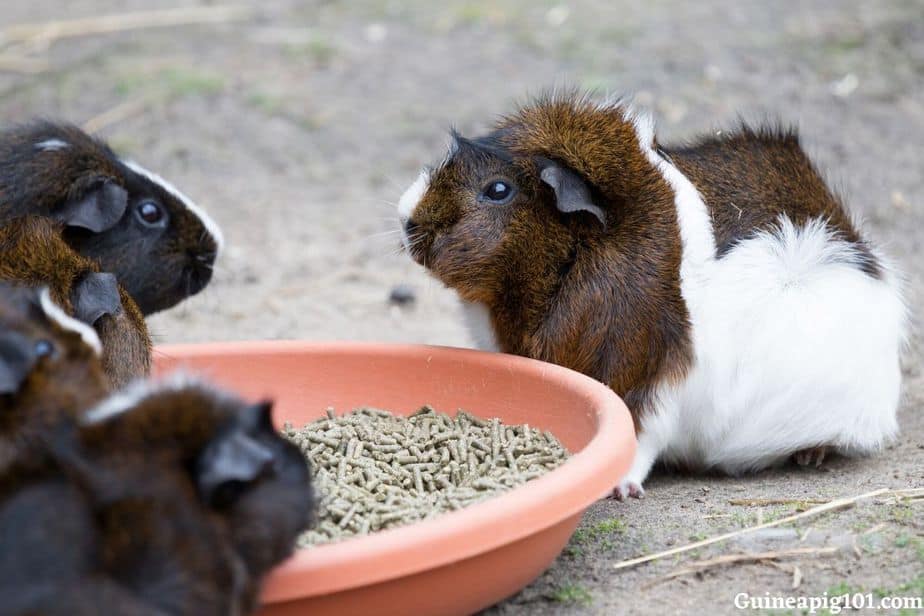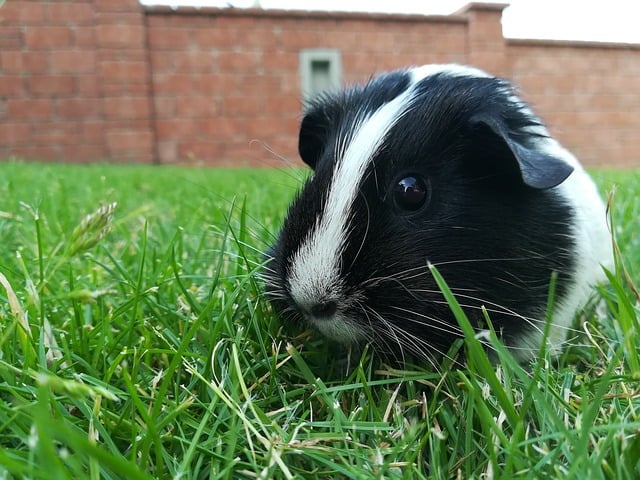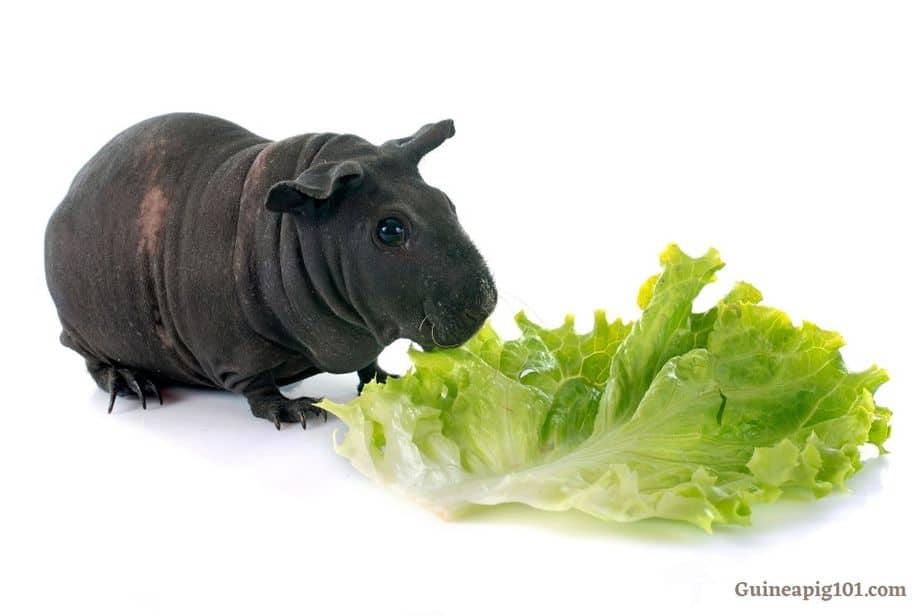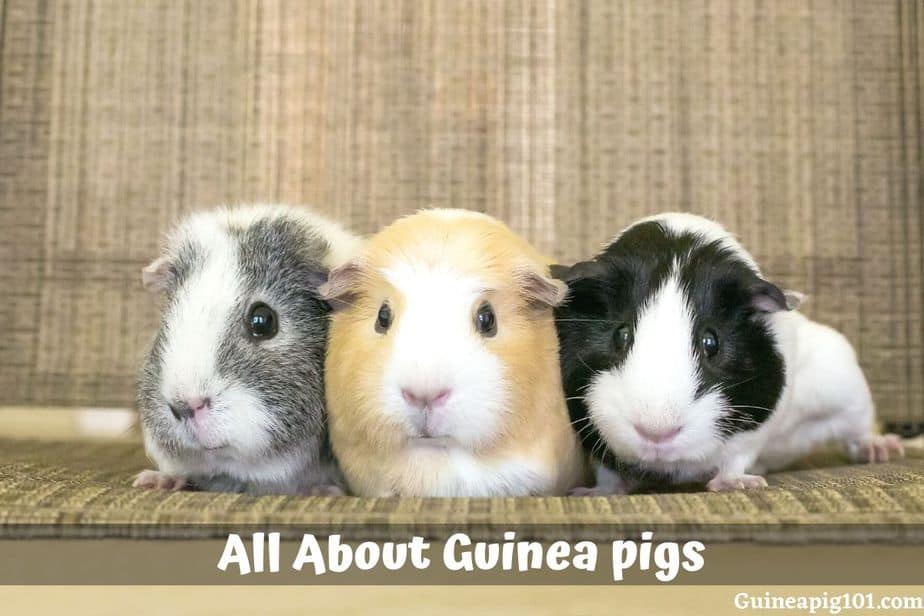Are you wandering to learn all about guinea pigs but have no idea where to start with? Do not worry at all we got you all covered in this article. Here I will share my in-depth Guinea pig information guide which I learned by doing research on them early on.
So, Let us first start by understanding what are Guinea pigs?
Guinea pigs are a small furry animal without a tail which is often kept as pets. They are said to be extinct from the wild except in some parts of South America.
Now Let’s learn some basic things about Guinea pigs on basis of their taxonomy.
Guinea pigs are basically a small animal in the Class Mammalian in the order Rodentia and in the family Caviidae. Now, what does that basically means?
In lay man’s term, that means Guinea pigs are small animal covered in fur. They give birth to live young’s and nurture them till they are self-sufficient.
They also have two pairs of Incisors teeth which grow continuously throughout their lifetime. Which resembles other cavies in having a small robust body with short limbs, large head and eyes, and short ears.
Where do Guinea pigs come from?
Although it is a very basic information still I thought of adding it to my Guinea pigs information guidebook just because many people still get confused with this because of their names. As their name implies “Guinea” but they are not from New Guinea in Africa.
It is said that Guinea pigs first came from the Andes Mountain of South America which in present is referred as southern part of Colombia, Ecuador, Peru, and Bolivia. It is also said that they have been domesticated for thousands of years ago. What we see today is mutated over 1000’s of year.
Why guinea pigs are called guinea pigs?
Have you ever wondered why Guinea pigs are called Guinea pigs even though they don’t look like pigs at all?
You don’t need to wonder anymore, we got the answer for you in this basic Guinea pig information guidebook.
Although by reading their name we might confuse them with the “Pigs” as such they are not related to the Pig family at all. So from where did, the name Guinea pig came from?
It is believed that the “Pig” portion of their name came from the squeaking noise that they make which resembles the sound of baby piglets.
The “Guinea” portion of their name is said to have come in the picture when in old times the sailors brought them from Andes Mountains of South America and sold them to other parts for a “Guinea” which is also referred as a term for old coins in America.
Which at last combined ended up making their common name as a Guinea pig for all.
Although there is no specific proof for the same, many people believe in the theory and many don’t.
What is the scientific name for a Guinea pig?
The actual name that derives from their taxonomy was “Cavia porcellus” but then people started calling them Cavies also in some parts of the world.
Guinea pig history.
I totally understand that sometimes history seems a bit boring for few people but there was a ton of Guinea pig information and facts which I never knew earlier so I decided to share the same with you guys too.
It is believed that for the first time Guinea pig was domesticated and breed in captivity by the tribes of the South American region as a livestock which they also use to refer as Cuy.
It is also believed that they were used as an offering to their Gods, Used them as a gift or exchange and also some of their medical purposes.
Later in 1200 AD, the breeding of this animal started in commercially resulting in a variety of species available today. During this period they were also widely used in the medical labs for test purpose of diseases and cure relating to Diabetes, tuberculosis etc. They were still part of the diet for many tribes in South America during that period.
Around the end of 16th century, they were first brought to Europe in the rule of Queen Elizabeth where they quickly became famous among the Upper class and Royal family as Exotic pets.
Later down the line, it became a common pet among all. Today they are one of the most loved and kept pets in America, Australia and some other parts of the world.
Basic Guinea pigs information and facts you must know about!
Now that you have gone through and understand the history of Guinea pigs we move on to some of the basic facts and thoughts which people have in their mind when they first start learning about this pet. I could see any beginner looking out for this stuff so I compiled all the basic Guinea Pig information out there and noted them down for you in the most simple way.
Are guinea pigs rodents?
Despite their common name “guinea pig” suggest they definitely are not from pig family. Guinea pigs which are also known as Cavies or cavy is a species of rodent which includes other rats, squirrel hamster etc. and belongs to family Caviidae of genus Cavia. So you can simply say they do belong to the family of rodent but their characteristics are quite different from other rodents.
Does a guinea pig need a companion?
Although Guinea pigs can live alone as a pet. But it is better kept in a group as they are social animals and in their natural habitat, they live in a herd of up to 50 Guinea pigs just like other social animals like elephants and Budgies.
So, if you are keeping them as a pet it’s better to have a companion for them. They need to have an adequate amount of Social interaction and play time to lead a happy life. If possible try to get at least two pairs together so that they can get adequate social interaction.
Sometimes a Guinea pig can even die of loneliness if they do not get enough social interaction; they are really well in hiding their emotions and can die due to it. Also if a Guinea pig loses its companion who they are really close to, they may get lonely and eventually suffer due to it. So, its best recommended keeping them in a group of at least 4 if possible.

Here is an interesting fact which I thought would be a great addition in my basic Guinea pig information guidebook:
Did you knew keeping a Single Guinea pig is Illegal in Switzerland. As they are a social animal and are only meant to be kept in a group the government has a strict rule against the same. Also, they can only grow best when kept in a group of at least 2-3.
Some people also think to keep one and interact with them on regular basis shall be enough. Although it might look enough still it’s better to get a companion as they might enjoy playing with you but a communication gap will prevail which can be completed only by a companion.
How long does a guinea pig live?
The average lifespan of a Guinea pig is anywhere between 5-8 years, Some may even live a lot longer.
“Snowball” a Guinea Pig which holds the world record lived for 14 years and 11 months approximately.
The life of a Guinea pig is severely affected by a few factors like Genetics, Environment of living and diet they get. The breed of the Guinea pig also determines their lifespan, Shelties or Peruvians can live up to 12 to 14 years whereas the hairless breed tends to live shorter up to 4-5 years. Guinea pigs also tend to grow slowly once they reach a certain age of 3 to 4 years.
Learn in-depth about its lifspan: How long do guinea pigs live?
How big does a Guinea pig get?
When it comes to sizes, Guinea pigs are somewhat different than their other furry cousins like mouse and hamster. A newborn Guinea pig can be anywhere in between 3- 4 inches. It surely depends upon the breed and how many babies are given birth at a time.
They tend to grow in size very rapidly and will surely double in size up to 6-8 inches in about 8 week’s time. After this time frame, their growth gets somewhat slacked. They will still continue to grow up to 8 to 10 inches in next 8 week’s time.
They may grow up to 14 inches in length once they have fully grown out. This makes it necessary that if you plan to keep them as a pet you get the largest size cage possible.
How much does a guinea pig weigh?
A newly born Guinea pigs weight anywhere between 60-100 gram depending upon the breed and numbers of the newborn at a time. Usually, it grows at a rapid pace in the first 8 weeks. A growth between 30-50gram per week is the normal growth for any Guinea pigs.
After the first 8 weeks, the growth shall slow down and reach its maximum of 900-1200 gram for male and 800-1000 gram for female by maturity. The female seems to be weighted on the lighter side as compared to males. Again, this depends upon the breed and diet of the animal.
It is really important to keep the track of the weight of your Guinea pig right from its birth as this helps us in understanding a lot about their health and well being. If you see your Guinea pig is underweight or overweight during different life phrases you can treat them accordingly and ensure they get a healthy life.
You don’t need any fancy weighing scale for your Guinea pig; just any of the normal kitchens weighing scale would do well. Just let them sit on top of it and wait until they are stable and record the weight, it’s that simple! Remember to keep the records for future reference.
Guinea pigs sleep pattern?
You might have heard that Guinea pigs are nocturnal. But are they?
Today in my Basic Guinea pig information guidebook I am going to bust out few myths about guinea pigs which even I didn’t know about when I started my journey.
Many people believe that guinea pigs are nocturnal and they hardly sleep but that is not true. Guinea pigs are mammal just like a human being and they do require sleep.
Now the sleep requirement varies from being to being. Human being requires a sleep of 8 hours some animals do require even more time to sleep just like a Guinea pig, They need approx 10 hours of sleep but you hardly see them sleeping right?
That’s because they sleep in laps. Unlike humans who tend to take a long nap of hours, these small creature takes small laps of a nap every few hours. They usually sleep for 4-10 minutes in a lap and again wake up and are active then again takes naps in a while.
You will also find Guinea pigs sleeping with their eyes open. In fact, they rarely close their eyes most of the time they keep an eye on predators for any danger. Although sometime they will hide in their burrows and take a comfortable nap once in a while most of the time they are active throughout the day and night.
Learn more about its sleep in this article: Do Guinea pigs sleep?
Guinea pig natural habitat
Although the domesticated Guinea pigs or cavie are extinct from the wild their close cousin or some other regular color species can be seen in the southern Americas hills and grassland.

Where do wild Guinea pigs live?
Wild Guinea pigs are usually found in the rocky areas, Grassland and savannas of the southern America where they live in a herd of 10-20 adults. They are mostly seen using borrows made by other animals but some of them even dig their burrow to live in. Most Guinea pigs can be seen active throughout day and night. They usually come out to forage for food or to groom themselves up.
What do guinea pigs eat?

Guinea pigs are herbivorous animals who love to forage for food. Most of the time they can be seen eating anything that can be found on the ground level.
Their usual diet consists of hay which they regularly chew on. Hay not only gives them the fiber and nutrient they require but also helps in maintaining their canine teeth which are continuously growing throughout their lifetime.
They also eat fresh fruits and vegetables from time to time. Anything like carrot, cabbage, Zucchini, Broccoli would do well. Just avoid few veggies like onion family, avocado, and potatoes.
Among fruits also many fruits suit them well, from apple, banana, orange to strawberry and melons.
Guide to Common Guinea Pig Breeds available.
In this Basic Guinea pig Information guidebook, I would discuss in brief about some of the most common breeds of Guinea pigs available for keeping as pets. Although there are many more species of them available we will just touch some of them down in this article and discuss them in detail in the next article. So let’s get right into it:
- The American/American crested Guinea pigs:
These guinea pigs with mostly one color fur and can be distinguished by their prominent ears and round nose. They usually grow up to 9 inches and lives up to 7 years of age. - Himalayan Guinea pigs:
These Guinea pigs are considered similar to Siamese cats among guinea pigs. Usually, they feature purely white fur with some brown and black patch over ears, feet, and nose. - Ridgeback guinea pigs:
The Ridgeback Guinea pig has a smooth short hair coat with a noticeable unbroken ridge of hair running over its back from neck to rump. - Teddy guinea pigs:
Teddy Guinea Pig has more like a small and dense hair coat. Their hair stands all over the body giving them a puff overlook more like a soft toy. - Rex Guinea pigs:
Rex guinea pig is among the rough-coated breed that has a small woolly texture coat with no guard hairs. Their coat has really small but dense hair which makes them really soft when held in hands. - Abyssinian Guinea pigs:
One of the top choices among beginners is the Abyssinians Guinea pigs. They are really easy to train and can be trained to be lap pigs. They usually have spiral hairs that usually grows up to 4-5cm to form their coat. - Silkie Guinea pigs:
The silkie Guinea pig has a Long, soft, and smooth coat of hair that covers their entire body. Unlike other Guinea pigs, their hairs are more straight which sweeps back to its head. They have high maintenance and also they spend most time grooming due to their hair. - Texel guinea pigs:
Texel guinea pigs are known for their soft and thick hair with curly looks. Although their hairs can be compared to Silkie but instead have round and curly shape. The lush and curly hairs need a lot of maintenance and are not recommended for beginners. - Cornet Guinea pigs:
Cornet guinea pigs are similar to Silkie guinea pigs due to their long smooth hair that runs down its back. However, the major difference is the cornet in the middle of its head; this distinctive whorl of fur is missing in Silkie. - Peruvian Guinea pigs:
One of the oldest breed of Guinea pigs which have some close cousins still roaming in the wild. Peruvian guinea pigs have hairs that grow much longer than any other breed of guinea pigs. The hairs need to be trimmed regularly or it shall frame a circle around their body. - Skinny Guinea pig:
The skinny Guinea pig has tough hair on their feet, muzzles, and legs. It does not have any hair over other parts of their body. Their skin is really soft and a little bit wrinkling around the neck which gives them a great look. But at the same time makes them more susceptible to wounds and infections. - Baldwin Guinea pigs:
Baldwin Guinea pigs are completely bald and have a rubbery texture to their skin. They have a coat of hair when they are born but later down the line, their hair starts falling until they get completely bald.
I hope all Basic Guinea pig information given in this small guidebook may have helped you in understanding them better. We have discussed everything about Guinea pigs and will follow up everything in deep details in other articles to follow.
Here is some other helpful resource for you: Guinea pig information by Britannica.

Rebecca
Tuesday 9th of July 2019
I have been fortunate enough to be a guinea pig owner since I was small. Each piggy lasted for short or long amount of time. The males that I had lasted about three years while the females lasted seven to eleven years (both males had some disorders one with stomach and the other his brain never developed properly). However guinea pigs are wonderful creatures no matter how long you’re gifted with them.